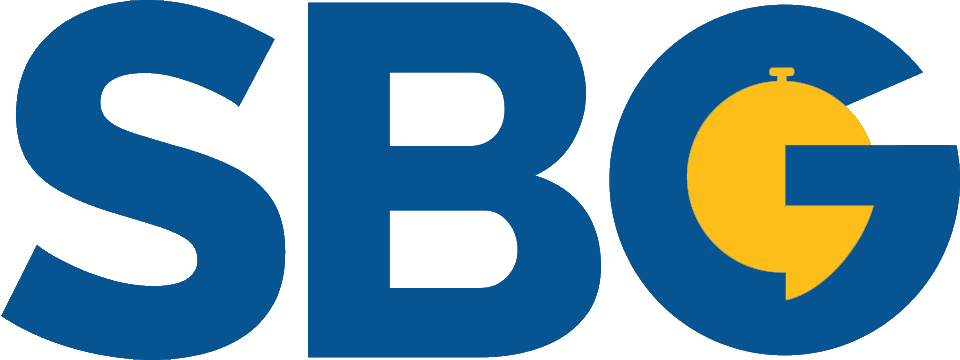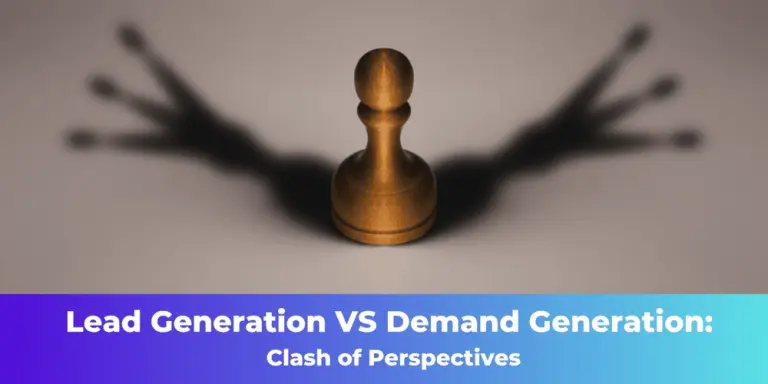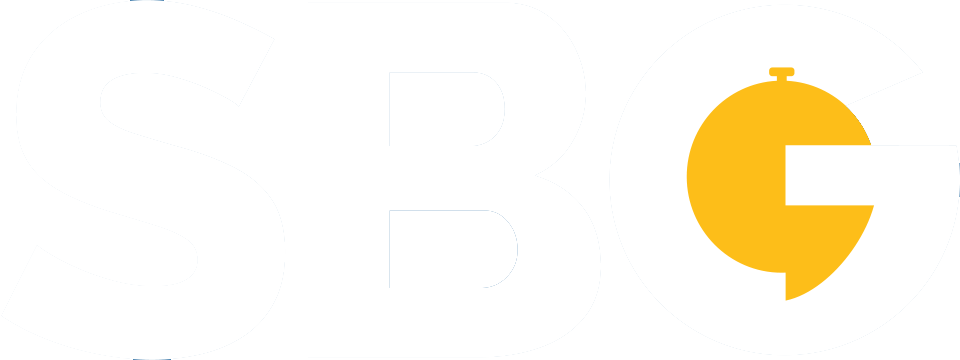When considering the comparison between demand and lead generation, a similar analogy can be drawn from the realm of content marketing.
Just as PPC (Pay-Per-Click) and SEO (Search Engine Optimization) strategies are integral parts of a comprehensive content marketing strategy, demand and lead generation are interrelated components of a cohesive marketing approach.
PPC serves as a short-term tactic, enabling businesses to quickly generate visibility and drive targeted traffic to their website through paid advertising. On the other hand, SEO focuses on optimizing web content and improving organic search rankings, providing long-term sustainability and visibility in search engine results. While PPC delivers immediate results, SEO establishes a strong foundation for ongoing organic traffic and visibility.
Just as PPC and SEO work hand in hand within a content marketing strategy, demand and lead generation complement each other in a comprehensive marketing plan.
By integrating these strategies, businesses can maximize their reach, capture the attention of their target audience, nurture relationships, and drive conversions.
Table Of Contents
- What is exactly Lead Generation?
- Pros of Lead Generation?
- Cons of Lead Generation?
- What is Demand Generation?
- Pros of Demand Generation
- Cons of Demand Generation
- What are the similarities between Lead Generation and Demand Generation?
- What is the difference between Lead Generation and Demand Generation?
- Which one is better for 2023?
- Can Lead Generation and Demand Generation work together in 2023?
- Frequently Asked Questions (FAQ)
What is exactly Lead Generation?
Lead Generation is a process of identifying and attracting potential consumers or leads for a company’s product or service. It is an essential part of the sales function with the primary goal of finding and converting quality leads
In today’s challenging environment, companies put a lot of effort into shortening the consumer’s journey through the marketing funnel.It is an integral part of the marketing funnel, which outlines the customer’s progression from awareness to consideration to decision and loyalty.

However, it’s essential to recognize that not every customer follows a linear path through these stages, as the modern path to purchase can be complex and varied.
To address this complexity, imagine implementing this model where your team actively sifts through a pool of potential clients, identifying and engaging with those who are most likely to become suitable candidates for your business. This targeted approach allows you to optimize your resources, saving both time and money while reducing costs in multiple ways. By focusing on qualified leads, you can allocate your efforts more effectively, nurturing and converting them into loyal customers who align with your offerings and values.
For more information, we suggest you read our blog “Is Lead Generation Worth It?”, where we dive into this topic deeper.
Pros of Lead Generation?
Lead gen offers numerous benefits for businesses looking to grow and boost their sales potential and implement a high-conversion approach.
In the following text, we mentioned the TOP FIVE.
- HIGH EFFECTIVENESS: Lead gen is highly effective for companies looking to expand their network of contacts in the Global market and scale their business. Let’s say you are a company from Holland, looking to expand your business to the UK market. In order to create and position yourself in the UK market, using traditional sales promotion tactics, you would have to implement a brand awareness approach that will take time, a substantial budget and still won’t guarantee that you will be effective and achieve results – new customers.
Compared to Lead Generation, which targets individuals most likely to be interested in your product/service. With a good lead gen expert, you could implement a method that utilizes data, usually given in LinkedIn, that would be useful in creating tactics that show high conversion rates.
By applying this model in a business, you ensure a quick and more efficient transition of potential clients to the LEADS phase to the CUSTOMERS phase.
- HIGH-QUALITY LEADS: One of the key benefits of lead generation is the ability to get high-quality leads in a short amount of time. Not all potential clients are ranked equally. Lead Generation is more than a cold-calling line. It focuses on clients who have already shown interest in your or similar products/services. With strategic lead gen tools and an expert who knows how to read data and create an approach, you will awaken the desire, and customers will easily go from awareness to conversion.
By prioritizing quality over quantity, you can create a data-driven approach and efforts to pinpoint potential customers that are more likely to convert. This approach allows you to optimize your time and resources, focusing on prospects with a higher potential for success.
- INSTANTLY VISIBLE RESULTS: In the fast-paced business world, speed is of the essence. Through various marketing tools, you can catch information and initiate faster follow-up actions. The ability to respond quickly contributes to better conversion and a positive customer experience. And exactly, Lead Generation does this.
- COMPETITIVE EDGE: Lead Gen gives you an edge over your competitors in today’s challenging business landscape. This proactive approach will help you capture leads before your competitors do, and in this way, you can achieve a dominant position in the market.
- LONG-TERM RELATIONSHIP BUILDING: Lead Generation is not just about sales but about building strong relations and loyalty with the audience. This model will help you maintain a dominant market position in long-term business.
How will this look in a practical B2B LinkedIn example? As we have written previously in this text, a B2B LinkedIn lead gen specialist will attract new B2B clients, usually through the LinkedIn approach. A specialist will know how to use available data and establish connections with the potential B2B prospect.
By utilizing LinkedIn’s vast data and informal interactions, your specialist can cultivate lasting relationships with your clients.

LinkedIn is more than just a professional network—it’s a goldmine for staying connected. Your B2B LinkedIn lead gen specialist will engage with B2B clients through likes, comments, and staying up to date with crucial events in their business lives. This personal touch builds trust and loyalty, making your B2B clients feel valued.
But the real magic lies in LinkedIn’s data. Your specialist can leverage this information to send timely messages and congratulations, demonstrating your attentiveness and care. With this powerful combination, B2B client retention becomes an art and a science.
For more about the benefits of this model, we suggest you read our blog “How Outsourcing Lead Generation can be beneficial for your business?” where we dive into this topic deeper.
And remember, retention is maybe even more important than acquisition, acquiring a new customer can cost five to seven times more than retaining an old one. (Forbes Magazine).
Cons of Lead Generation?
This one is tricky! It reflects on the dual nature of lead generation: Turning benefits into challenges without a specialist.
While lead generation offers cost-effectiveness, lead quality, and speed of results, these advantages can become cons if not guided by a specialist.
Harness the expertise to manage costs, ensure quality leads, and accelerate outcomes effectively. But let’s see specifically how pros become cons and why.
- COST-EFFECTIVE SUCCESS: While lead generation can be a cost-effective marketing strategy, there are potential costs you should know before applying this model to your business model. Hiring a team of Lead Gen specialists and implementing the latest technology and marketing tools, like target advertising, may require an initial financial investment.
But you should see these potential costs as an investment in future growth because, without investment, you cannot prosper in business.
Also, if you don’t set up the right team of lead gen specialists, you are just hemorrhaging money all over the place.
The wrong person will just cost you time, money and ultimately your energy and focus, which is priceless. So pick your lead gen specialist wisley.
- QUALITY: While the primary objective of Lead Generation is to engage with customers who have shown interest in your product or service, it can sometimes attract individuals who fall outside your ideal target group. However, this challenge can be effectively overcome by enlisting the expertise of a specialist skilled in data utilization. By implementing targeted criteria, assessing potential client quality, and establishing a tailored retention strategy, you can optimize your efforts.
By fine-tuning quality and precisely defining your target audience, you significantly increase the likelihood of converting leads into valuable customers. With the right strategies in place, your marketing efforts become laser-focused, resulting in higher conversion rates and improved overall success.
- SPEED OF RESULTS: Lead Generation makes results faster, compared with other, but it’s essential to know conversion is not always guaranteed.
The sales process is complex and requires nurturing leads over time, building relationships, and customizing products to customer’s needs.
To create a truly personalized experience, implementing an effective strategy is crucial. By hiring a lead gen specialist well-versed in data utilization, you can enhance your conversion speed while catering to the unique requirements of multiple clients simultaneously.
What is Demand Generation?
Demand generation is just an older sibling of lead generation. It is a marketing that essentially creates and nurtures interest in the company’s product or service.Using the this, you will generate demand and attract and engage potential clients.
According to Amazon, it’s a type of inbound marketing and is the umbrella term for the full marketing that creates interest in your brand’s product or service.
he first steps of this are answers to the following questions:
1. How do consumers feel about your product/service?
2. What do they know about your product/services?
3. What are their first associations with the name of your brand?
In answering the previous questions, it is necessary to define how to present the brand to customers and how to improve their experience. Demand generation is crucial in the B2B (business-to-business) world, where building strong relationships and nurturing leads are essential for success.
If you are still on this topic, we suggest read our blog “Lead Generation vs Brand Awareness” and learn more about their correlation.
Pros of Demand Generation?
Demand Generation is a complete must when we talk about business growth. Let’s check just few of them:
Long term investment: The efforts put into building brand awareness, nurturing customer relationships, and fostering loyalty accumulate over time, resulting in a solid foundation for future growth. With each passing year, the benefits of a well-executed demand generation strategy compound, propelling businesses towards larger rewards and a thriving future.
Standing out in the competitive market: In today’s fiercely competitive market, investing in data-driven this is a game-changer. By strategically utilizing information and employing targeted tactics, businesses can establish a unique identity, gain a competitive edge, and drive higher conversion rates. Take, for example, Tesla, a leading electric vehicle manufacturer known for its innovative approach. Through their data-driven efforts, including sophisticated analytics, personalized messaging, and strategic targeting, they have successfully captured the attention of their target audience. By leveraging valuable data insights and employing effective tactics, companies can stand out, connect with clients on a deeper level, and achieve long-term success in the dynamic business landscape.
Higher retention rates&loyalty: Investing in demand generation goes beyond immediate results; it cultivates a loyal customer base deeply attached to your brand. By strategically allocating resources to engage and nurture potential clients, businesses create a strong bond that fosters brand loyalty. This means clients are more likely to stay committed to your brand, even in the face of fierce competition.
When customers feel connected to a brand through effective strategies, such as personalized experiences, targeted messaging, and exceptional customer service, they develop a sense of loyalty and emotional attachment. This deep-rooted loyalty not only leads to repeat purchases but also transforms clients into advocates who passionately recommend and promote your brand to others.

Cons of Demand Generation?
While Demand Generation is a powerful strategy that fuels business growth, it has its considerations. In the following text, we will analyze those that have the most significant impact on the further operations of the company.
Cost Considerations: Although it shows a high-efficiency rate, Demand generation may require initial financial investments. Creating catchy content and implementing personalized campaigns are good ways of generating income. Still, initially, it can bring you visible costs, and you should be prepared for that.
Quality Management: While Demand Generation aims to attract quality leads, there is always a possibility that the created advertisement will also reach members who do not match the main characteristics of your target group. But this is the matter of the initial step in your company – how is it entitled for creating the demand generation strategy? Which data do they use? And what tactics are they creating?
Prolonged duration of achieving KPIs: Building strong relationships through brand awareness and implementing ideas in leads consideration takes time. The sales cycle in B2B environments is more complex and requires more time and a high level of sales knowledge as well, with marketing knowledge also.
Demand Generation in B2B can result in a longer sales process than in B2C (Business to Customers) approach.
What are the similarities between Lead Generation and Demand Generation?
Lead and demand generation share remarkable similarities, like two sisters in the same family, making them the best combination for business success. Here are the fundamental similarities between those models and why they should be applied together:
- Shared focus on customer engagement: Using personalized messaging and creative content increases user engagement, encouraging positive interactions that leave a lasting impact, and that’s exactly what both strategies do.
- Harmonized approach: Lead and Demand Generation are united in the process of targeting customers. Both strategies concentrate on understanding and providing services that meet the demands of specific market segments.
- Focus on relationship building: Lead and Demand Generation recognize the importance of building and nurturing relationships with targeted audiences. They establish trust, nurture connections, and strong relationships based on loyalty, a good foundation for long-term business.
- Integration with Sales goals: Lead and Demand generation work hand in hand, supporting and empowering the sales team. The main goal of both strategies is to speed up the sales process and make conversions.

What is the difference between Lead Generation and Demand Generation?
Demand and lead generation are not separate entities but integral parts of a cohesive business strategy. While they serve different purposes at various stages of the customer journey, combining these strategies is key to achieving guaranteed success. Demand generation establishes brand awareness and educates consumers, while lead generation focuses on engaging buyers closer to making a decision. By integrating these approaches, businesses maximize their marketing efforts, driving awareness, interest, and conversions. The seamless collaboration of demand and lead generation unlocks the full potential for business growth and profitability.
Nike is a prime example of a company that effectively combines demand and lead generation strategies. Their captivating advertising campaigns, influential brand ambassadors, and engaging social media content generate widespread brand awareness (demand generation).

Simultaneously, Nike utilizes targeted email marketing, personalized product recommendations, and exclusive promotions to capture leads and guide them through the sales funnel (lead generation).
By integrating these strategies, Nike attracts a broad audience, nurtures customer relationships, and drives conversions, contributing to their ongoing success in the competitive market.
Which is better for 2023?
Determining which is better between demand and lead generation is akin to asking whether SEO or PPC strategy is superior. The truth is, there is no definitive answer. They both serve the same ultimate goal – conversions.
As well as demand and lead generation serve unique purposes, making them integral parts of a coherent marketing strategy aimed at achieving the ultimate goal of driving business success.
While demand generation builds a foundation of awareness and interest, lead generation capitalizes on that foundation by converting interested prospects into qualified leads. Both strategies are vital components of a comprehensive marketing plan, each serving a specific purpose in driving revenue growth.
By synergizing demand and lead generation efforts, businesses can effectively attract, engage, and convert their target audience.
Ultimately, the choice between demand and lead generation should not be viewed as an “either/or” decision. Instead, businesses should recognize the symbiotic relationship between the two and leverage their respective strengths to create a holistic marketing strategy. By incorporating elements from both strategies, businesses can achieve optimal results, reaching a broader audience, nurturing customer relationships, and driving sustained business growth.
Can Lead Generation and Demand Generation work together in 2023?
Yes! Integrating Lead Generation and Demand Generation is essential for achieving company growth. These two strategies complement each other in how Lead Generation focuses on capturing qualified leads and guides them through the sales funnel. At the same time, Demand Generation creates awareness and creates awareness and generates interest among a broader audience.
Together, they make the best customer journey from initial awareness to lead conversion.
When Lead and Demand Generation work together, they become a powerful driving force that boosts growth and maximizes long-term success.
If you are still on this topic, we suggest you read our blog “How to Outsource Lead Generation?”.
How to Outsource Lead Generation or Demand Generation Specialist?
Outsourcing Lead Generation or Demand generation is a very simple, but demanding process. It encompasses these steps provided.
Client’s Idea
Our partnership will start by scheduling a call with you to understand your business requirements and goals. Based on all the information, we will prepare a customized proposal with a scope of work, pricing, and other relevant details. The proposal will also highlight the benefits of outsourcing digital marketing positions, such as access to a more incredible talent pool and efficacy in executing your projects while being cost-friendly.
Setting up the right team
Once we sign the Agreement, our HR department will start with the screening and recruitment process, so we can set up a team of marketing experts to work on your project. Once we get a pool of qualified candidates, we will present them to you for review. You would be able to interview and evaluate the candidates in the last round to determine if they are a good fit for your business.
Facilitating and onboarding
Once you get your dedicated Belgrade team who works exclusively for you, we will start the onboarding process. This would include setting up their office and workspace, providing necessary equipment or tools, and ensuring they receive the required training.
Execution
The marketing team will execute the project as per the agreed-upon SLA. The team will use various methods to generate leads, including email marketing, social media outreach, cold calling content creation, running PPC campaigns, etc. We are keeping up to date with all the necessary information quickly since you have a designated project manager explicitly working for your business/project.
Maintenance and training
We will provide comprehensive training for the newly recruited marketing team. This training will include product knowledge, sales techniques, and other relevant skills. We will ensure that your freshly established marketing team is equipped with the tools and resources necessary to succeed in the industry in which you operate.
Managing and reporting
As mentioned, each project has from our side project manager who ensures everything runs smoothly in the office. He is your single point of contact, overseeing the project, so you can rest assured that all your requirements will be met and you will receive regular updates on the progress of your project.
Frequently Asked Questions (FAQ)
What is exactly Lead Generation?
Lead Generation is a process of identifying and attracting potential consumers or leads for a company’s product or service. It is an essential part of the Sales function with the primary goal of finding and converting quality leads.
What are the Pros of Lead Generation?
Lead generation offers numerous benefits for businesses looking to grow and boost their sales potential, the most important:
- EFFECTIVENESS
- HIGH-QUALITY LEADS
- INSTANTLY VISIBLE RESULTS
- COMPETITIVE EDGE
- LONG-TERM RELATIONSHIP BUILDING
What are the Cons of Lead Generation?
While lead generation, as a method of growing the business offers cost-effectiveness, B2B lead quality, and speed of results, these advantages can become cons if not guided by an industry specialist. Meticulous work can become truly generate high quality B2B outcome, but doing activities ‘’on a hunch’’ based on unorganized work and gathered information can be nonoptimal.
What is Demand Generation?
Demand generation is a marketing strategy that creates and nurtures interest in the company’s product or service. You will generate demand and attract and engage potential customers using the Demand Generation strategy.
What are the Pros of Demand Generation?
Demand Generation can be a game changer when we talk about business growth. It has a lot of benefits, some of them are:
Long term investment
Standing out in the competitive market
Higher retention rates&loyalty
What are the Cons of Demand Generation?
While Demand Generation is a powerful strategy that fuels business growth, like any strategy, it has its considerations, like:
Cost Considerations,
Quality Management
Prolonged duration of achieving KPIs
What are the similarities between Lead Generation and Demand Generation?
Lead and demand generation share remarkable similarities, making them the best combination for business success. The fundamental similarities between lead and demand generation and why they should be applied together:
- Shared focus on customer engagement
- Harmonized approach
- Focus on relationship building
- Integration with Sales goals
What is the difference between Lead Generation and Demand Generation?
Lead Generation focuses on capturing leads closer to their customer journey’s decision-making stage, turning interested into action. It targets a specific audience who has shown interest in the product or service.
On the other hand, Demand Generation aims to establish customer awareness, educate consumers about the brand, and encourage them to purchase. It takes a broader perspective, implementing various marketing tactics to increase brand awareness.
Lead Generation is a specific part of the sales strategy, while Demand Generation encompasses a broader range of activities beyond final sales.
Which one is better for 2023?
Combining both strategies simultaneously is the best result if you are thinking about scaling your business and potential growth. Without building brand awareness among consumers, you won’t be able to reach qualified leads and desired conversions.
Can Lead Generation and Demand Generation Work Together?
Yes! Integrating both strategies into your business is essential to achieving company growth. They complement each other in the way that lead gen focuses on attracting qualified prospects and guiding them through the sales funnel. When Lead and Demand Generation work together, they become a powerful driving force that drives growth and maximizes long-term success. For more information we suggest you contact our Sales team and schedule a consultation.



